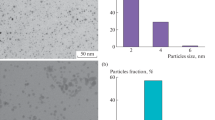Abstract
Promastigote and amastigote forms of human pathogenicLeishmania from the Old and New World, including promastigotes ofL. enriettii, were tested with neoglycoproteins to ascertain the existence of endogenous lectins. These tools expose the chemically coupled sugar that is attached to the inert carrier as a potential ligand for the binding reaction. Agglutination tests demonstrated that the promastigotes of humanLeishmania reacted only with the neoglycoproteinsN-acetyl-d-galactosamine-para-aminophenyl-bovine serum albumin (galNAc-BSA) andN-acetyl-d-glucosamine-para-aminophenyl-bovine serum albumin (glcNAc-BSA), whereas the amastigote forms failed to react with the neoglycoproteins. In contrast, the promastigotes ofL. enriettii were agglutinated by the neoglycoproteind-mannose-bovine serum albumin (man-BSA). The agglutination reactions could be inhibited by the homologous sugarsN-acetyl-beta-d-glucosamine,N-acetyl-beta-d-galactosamine, and alpha-d-mannose. Fluorescence tests yielded the same results. The incubation of the promastigotes with ethylenedinitrolotetraacetic acid (EDTA) prevented their reaction with the neoglycoproteins, whereas the addition of calcium restored it. This result demonstrates thatLeishmania express calcium-dependent lectins that are accessible on their surface.
Similar content being viewed by others
References
Barondes SH (1986) Lectins in cellular slime molds. In: Liener IE, Sharon N, Goldstein IJ (eds) The lectins properties, functions and applications in biology and medicine. Academic Press/Harcourt Brace Jovanovich, Orlando San Diego New York Austin London Montreal Sydney Tokyo Toronto, pp 467–491
Blackwell JM (1986) Role of macrophage complement and lectinlike receptors in bindingLeishmania parasites to host macrophages. Immunol Lett 11:227–232
Bray RS (1983)Leishmania mexicana mexicana: attachment and uptake of promastigotes to and by macrophages in vitro. J Protozool 30:314–323
Chakraborty P, Das PK (1988) Role of mannose/N-acetylglucosamine receptors in blood clearance and cellular attachment ofLeishmania donovani. Mol Biochem Parasitol 28:55–62
Chang KP (1981)Leishmania donovani — macrophage binding mediated by surface glycoprotein/antigen characterization in vitro by a radioiosotopic assay. Mol Biochem Parasitol 4:67–76
Etges R, Bouvier J, Bordier C (1986) The major surface protein ofLeishmania promastigotes is a protease. J Biol Chem 261:9098–9101
Farthing MJG, Pereira MEA, Keuch GT (1986) Description and characterization of a surface lectin fromGiardia lamblia. Infect Immun 51:661–667
Hernandez AG, Rodriguez N, Stojanovic D, Candelle D (1986) The localization of a lectin-like component on theLeishmania cell surface. Mol Biol Rep 11:149–153
Kobiler D, Mirelman D (1980) Lectin activity inEntamoeba histolytica trophozoites. Infect Immun 29:221–225
Macha J, Prochazkova Z, Cerva L, Gut J (1985) Isolation and characterization of lectin fromSarcocystis gigantea. Mol Biochem Parasitol 16:243–249
Molyneux DH, Ryan L, Lainson R, Shaw JJ (1986) TheLeishmania-sandfly interface. In: Rioux JA (ed)Leishmania: Taxonomie — Phylogenese; Institut Mediterraneen d'Etudes Epidem et Ecol, Montpellier, pp 311–324
Petri WA, Smith RD, Schlesinger PH, Murphy CF, Ravdin JI (1987) Isolation of the galactose binding lectin that mediates the in vitro adherence ofEntamoeba histolytica. J Clin Invest 80:1238–1244
Puentes SM, Sacks DL, Silva R da, Joiner KA (1988) Complement binding by two developmental stages ofLeishmania major promastigotes varying in expression of a surface lipophosphoglycan. J Exp Med 167:887–902
Ravdin JI, Stanley P, Murphy ChF, Petrie WA (1989) Characterization of cell surface carbohydrate receptors forEntamoeba histolytica adherence lectin. Infect Immun 57:2179–2186
Rizvi FS, Quaissi MA, Marty B, Santoro F, Capron A (1988) The major surface protein ofLeishmania promastigotes is a fibronectin-like molecule. Eur J Immunol 18:473–478
Russel DG, Wilhelm H (1986) The involvement of the major surface glycoprotein (gp 63) ofLeishmania promastigotes in attachment to macrophages. J Immunol 136:2613–2620
Schottelius J (1987) Selective lectin reactions of two stocks ofLeishmania enriettii with differing pathogenicity. Parasitol Res 73:1–8
Schottelius J, Gabius HJ (1992, in preparation) Carbohydrate receptors of Leishmania donovani: Quantitation of cell surface receptors and isolation from whole cells. Parasitol Res
Tannich E, Ebert F, Horstmann RD (1991) Primary structure of the 170 kDa surface lectin of pathogenicEntamoeba histolytica. Proc Natl Acad Sci USA 88:1848–1853
Turco SJ (1988) The lipophosphoglycan ofLeishmania. Parasitol Today 4:255–257
Turco SJ (1990) Structure of theLeishmania donovani lipophosphoglycan. In: Agabian N, Cerami A (eds) Parasites Molecular Biology, Drug and Vaccine Design. UCLA Symposia on Molecular and Cellular Biology — New Series. Wiley-Liss, New York, Chichester, Drisbane, Toronto, Singapore, vol 130, pp 173–181
Turco SJ, Sacks DL (1991) Expression of a stage-specific lipophosphoglycan inLeishmania major amastigotes. Mol Biochem Parasitol 45:91–100
Warburg A, Tesh RB, McMahon-Pratt D (1989) Studies on the attachment ofLeishmania flagella to sandfly midgut epithelium. J Protozool 36:613–617
WHO (1984) The leishmaniases. Technical Report 701. World Health Organization, Geneva
Wyler DJ, Sypek JP, McDonald JA (1985) In vitro parasite-monocyte interactions in human leishmaniasis: possible role of fibronectin in parasite attachment. Infect Immun 49:305–311
Author information
Authors and Affiliations
Rights and permissions
About this article
Cite this article
Schottelius, J. Neoglycoproteins as tools for the detection of carbohydrate-specific receptors on the cell surface ofLeishmania . Parasitol Res 78, 309–315 (1992). https://doi.org/10.1007/BF00937089
Accepted:
Issue Date:
DOI: https://doi.org/10.1007/BF00937089




